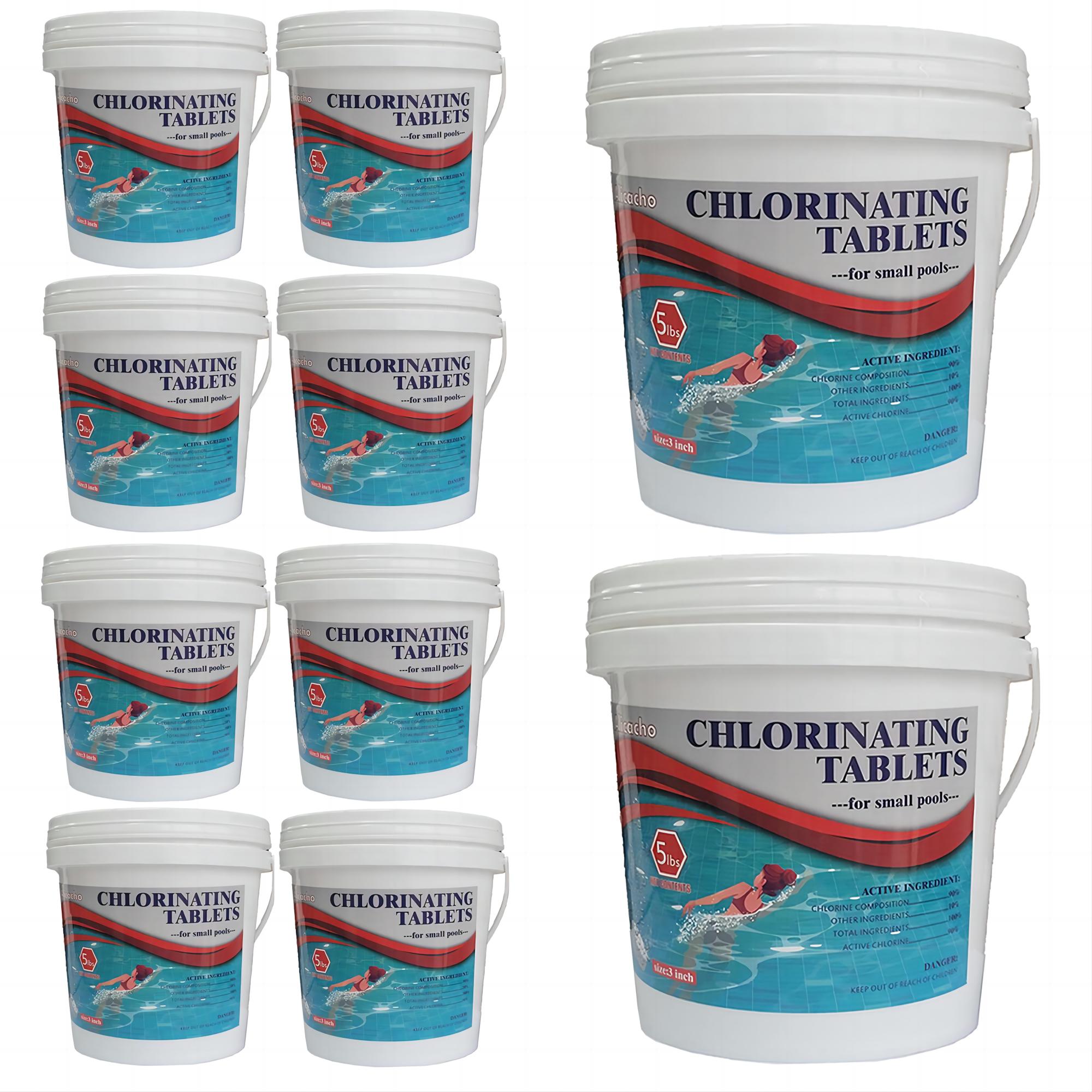One of the important parts of pool maintenance is shocking. It helps you maintain the cleanliness and safety of the pool water, but before getting into the water, do you have an idea how long to wait after shocking pool? Well, to ensure that everything will be in order and safe, it is necessary to figure it out.
When it comes to knowing when is the proper time to soak into your pool after shocking it, there are factors that you must consider, and one of the most important ones is the type of shock that you use. This will determine the period that you have to take into mind, before getting your day’s dip into the pool! Getting to understand all the principles that we are about to discuss in this post would be helpful as you must not plan a pool party right away after shocking your pools!

Part 1. What Is Shocking a Pool?
If you want to keep your pool water healthy, you have to shock it by following a schedule depending on pool usage. Pool shock is a type of chemical substance that you can use to kill all the bacteria and germs and make your pool pleasant to swim in for your family, friends, and even patronizers.
One of the common components of pool shock is chlorine. This chemical is combined with other substances forming a compound, and this compound will then be mixed with the other ones, to produce solutions and create a pool shock. As long as these solutions are used properly, they can’t be toxic and harmful.
It is also needed that you know when is the proper time to shock your pools. Some of the common instances when you need to do it are, after a heavy rain especially if your pool is uncovered, or after having a blast at your pool party. Shocking is very important as it balances your pool after contamination. The growth of algae is also prevented, it also helps remove chloramines and even helps revitalize the existing chlorine in your pool water.
You must include shocking your pool in your maintenance activities to make sure that contaminants are under control. Also, it helps to lower the stresses on the sanitization and filtration processes brought about by different contaminants. Pool shocking can kill all the possible bacteria, germs, organic contaminants, and will surely bring the water balance in your pool.
Once you are done shocking, it is also important to be mindful that it is not safe to dip into the pool water right away! In the next part of this post, we are going to figure out why, and we are also going to know how long to wait after shocking pool to avoid unwanted circumstances.
Part 2. How Long to Wait after Shocking Pool?
If you are a pool owner, and you included shocking as part of your maintenance activities, you should know how long to wait after shocking a pool. This will make sure that irritation and other possible health problems will be avoided after that.
If we are about to follow the general guidelines on pool shocking, the safest period to consider, and can be said that it is already safe to swim in the pool after shocking, is 24 hours. You also have to remember that after considering 24 hours after pool shock, you also have to conduct chemical level testing including the chlorine and pH tests. You have to be sure that everything is in balance, and that free chlorine level is between the range of 1 and 3 ppm.

In case you have encountered some serious algae problems in your pool, you also have to make sure that they are completely removed from the water before soaking in.
Some pool experts say that you can already swim into your pool after 8 hours after pool shock or after you have tested and made sure that chlorine is back to its safe level, you can always use test strips or test kits to have your water chemistry tested. But you can always consider the general rule of thumb to do the swimming after 24 hours to make sure everything is safe. This is the best period to consider for chlorine to do its magic and completely dissipate into your pool.
If you swim into the pool and you do not consider these pointers it could lead to serious issues. You will likely experience irritation in the skin, eyes, mouth, throat, and sometimes more. You should also not ingest water as it can lead to serious problems. Furthermore, you can also experience long-term lung problems since pool shocking is made from serious chemicals. Not only that, but you should also not risk it since it can lead you to ingesting contaminants as well which can ultimately make you sick, and it must be made sure that you have studied how long to wait after shocking pool, before doing the pool.
Part 3. What Type of Shock Should You Use?
You should also consider the type of shock to use when doing pool shocking. There are factors that you have to consider especially if you are dealing with a serious water problem.
If you have a significant water problem, it is recommended to use chlorine-based shocks such as dichlor shock calcium hypochlorite. These have powerful concentrations of chlorine which will kill algae and contaminants. They will also increase the amount of chlorine in your pool water, so when you opt to use it, the pool will ultimately not be safe to swim in.
On the other hand, if you are looking for a pool shock for your regular pool maintenance or you just need to refresh your sanitizer, you can use a non-chlorine shock. This is also called an oxidizer, and non-chlorine shock will allow you to go back into swimming after it is added to your pool water. This is because it would not affect the chlorine levels. Even though this type of shock will keep and bring back the balance to your water, it is not that powerful to deal with serious problems in your pools such as excessive algae.
Of course, it must be noted that choosing the best product for pool shock will turn in the best results any pool owner would love! You should also remember to always read the labels of your pool shock products before executing the process right away. You should follow the instructions as indicated and make sure the right dose based on your pool size is also considered. This will lead you to proper pool shocking and will help you execute pool shocking as effectively as it should.
Part 4. FAQs
1. Does it Have to be Dark to Shock a Pool?
For effective pool shocking, use stabilized chlorine shock with cyanuric acid during the day to protect against UV rays. Avoid using unstabilized chlorine shock, like calcium hypochlorite, during daylight as it gets destroyed by the sun. Evening is preferred for shocking to maximize chlorine effectiveness and clean pool water thoroughly.
2. How Often Should You Shock Your Pool?
You should regularly shock your pool to keep the water safe and healthy. It will also make sure that it is free from any types of contaminants. It is only safe to have a pool shocking once every week depending on how frequently your pool is used. You should do additional shocking after a heavy rain, or after doing a pool party. There are also conditions that you have to watch before doing a shocking such as your pool being cloudy, green, or foamy, or if you have noticed that there is already an odorous smell on your pool water.
3. What Happens if You go in a Pool that Was just Shocked?
To make sure that contaminants, pathogens, and other bacteria is removed from the pool, do shock. It will make your pool safe for swimming. Pool shocking involves the use of heavy chemicals like chlorine. Once you swim into a pool immediately after shocking, the effects on your skin, eyes, throat, and body can already be felt. You can even have lung problems, so beware of the general rule of thumb when it comes to how long to wait after shocking a pool. This will save you from experiencing drastic effects that you surely do not want.




